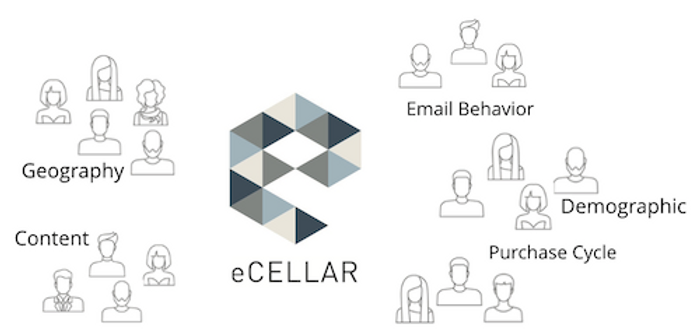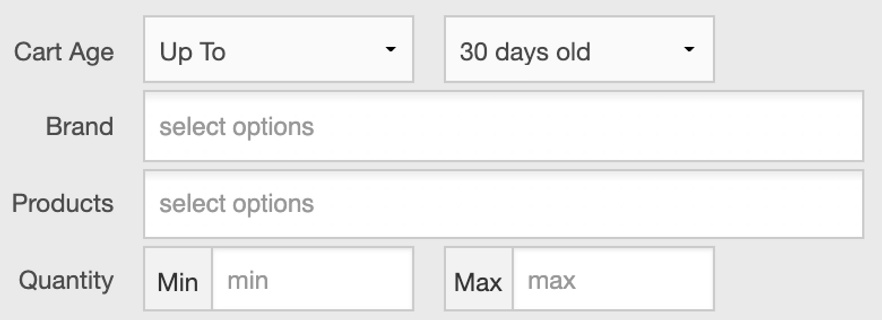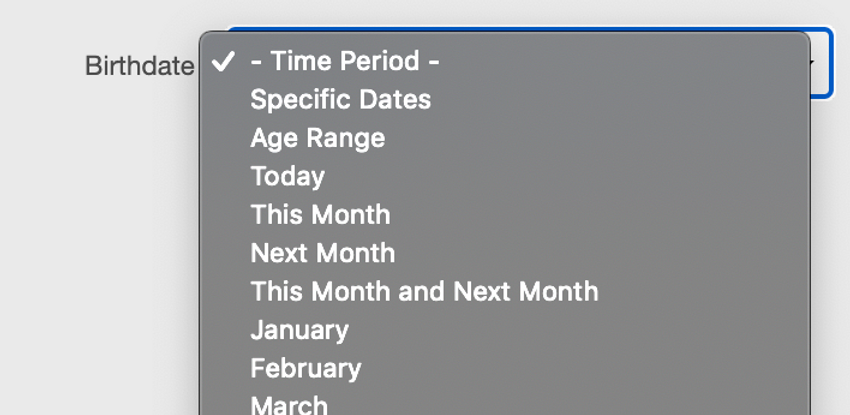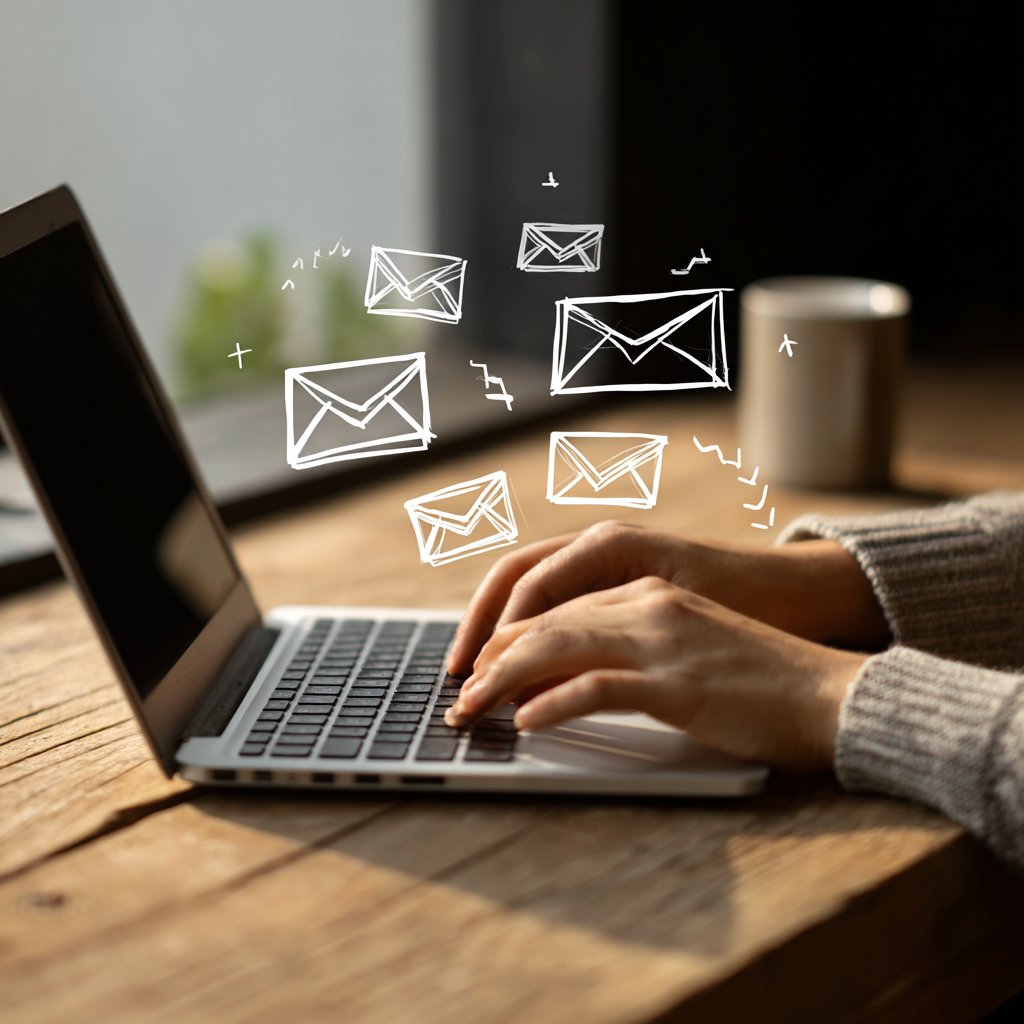By Susan DeMatei, Wine Glass Marketing

With our increased focus on digital channels during COVID, email carries a heavy load within our marketing plan. Segmentation allows us to maximize the sales we see from email, but success depends on the campaign strategy. Below are just a few ways the marketing tools in eCELLAR can make segmenting your customers so much easier.
1. Geographic Segmentation
One of the easiest ways of segmenting a database is through the location. Target people in certain areas for shipping offers based on weather conditions or events in the local area. Use a zip code radius to filter local club members to notify them about curbside pickup options.

On the other hand, if we fail to geographically segment, we are emailing a customer in New York about an event in California, which does not improve the impression this customer has about our brand’s accountability, integrity, and accuracy. Where they once felt a connection at the point of joining our mailing list, they might now have the false impression that we are careless or view them as an email address and not a person. This residual impression reflects negatively on a brand, which extends to both products and service quality.
Furthermore, uncertain times such as these afflict people in various states at different degrees and levels – and it’s very personal and emotional. We don’t want to seem “tone-deaf.” For instance, if we post the statement “now that things are starting to open up,” this may upset customers in states where COVID cases are escalating.
eCellar allows easy selection of states, (either billing or shipping), to reach the proper target audience. With geographic segmentation, we lower the risk of unsubscribes and increase the chance of a conversion.
2. Behavior & Content-Based Segmentation
A good customer record is like a layer cake. During each interaction, we collect more information – or layers – to add depth and complexity to our total view of a customer. Looking at what we know about our customers allows us to create rich content based on the layers. For example, what was in their last abandoned shopping cart on your website, what prior products have they purchased, what customer tags (preferences) are checked in their profile? Knowing what piques their interest is relevant to target these customers effectively.

What would happen if a sweet white wine customer received a special offer on a dry red wine? A low percentage may purchase if they are loyal customers, but most will likely ignore the offer, or unsubscribe since the content is not pertinent. For a better response, use eCELLAR’s campaign tools to segment based on what products the customer has purchased, what range their lifetime value falls into, and how many historical visits (and how recently) they’ve made to your winery..
3. Email Behavior-based Segmentation
It isn’t a stretch to assume an email sent to bounced addresses will not see success. So why continue sending marketing offers to those who have never opened an email? In eCELLAR, we can segment based on customer responses to divert these chronic non-responders into a group to earmark for different tactics.

For example, we can create a list of customers who have never opened an email and target them with outbound calling or social media. Alternatively, we can send different incentives if they have opened the email, but not clicked the links. We can even segment ones who have or have not clicked a specific link within a campaign. This kind of segmentation is unprecedented in other available alcohol eCommerce systems and rivals other dedicated mail platforms such as Mailchimp or Constant Contact who can have limited integration capabilities.
4. Demographic Segmentation
Another useful strategy in effectively maximizing your ROI on email marketing is segmenting based on demographics, such as age groups.

Research has shown us that generations tend to purchase based on different psychographic triggers. Baby Boomers want validation that they’re making the right decision, which is why specific wine packs and press scores perform well. Whereas Generation X tends to be cynical and skeptical, so choices and serving options push their buttons. For a younger audience, we will want to adapt our messaging style to include more educational content to appeal to a group just beginning to get interested in wine.
In eCELLAR, we can segment by features such as Customer Type, Customer Source, Notes, Tags, and/or age range, to help us curate our content and messages for maximum impact.
5. Purchase Cycle Segmentation
Of course, targeting based on past purchases leads to additional future sales when we send relevant information to consumers. This also adds to brand affinity and creates a higher lifetime value.

But, let’s carry this over to the Wine Club. eCELLAR can tell us the average tenure of club membership. And, if we know this average tenure, we can look at individual club signup dates and predict which members are about to turn that corner and be at risk of cancellation. Moreover, with some scheduled emails in the eCELLAR Campaign Manager, we can reach out to those customers at precisely the time they are at risk with an added benefit or bonus to keep them engaged.

Expand this strategy to use the eCELLAR segmentation abilities to determine the recency and frequency for all customers. By effectively targeting based on tenure or behavior, we can better motivate a conversion.
There is no need to tackle all five of these strategies at once. It’s more valuable to master one of these strategies one at a time, test response, then optimize. By making educated use of the dynamic segmentation abilities in eCellar, we can increase ROI, improve KPIs for email campaigns, and sell more with a personalized segmentation approach.
Susan DeMatei is the President of WineGlass Marketing, a full-service direct marketing firm working within the wine industry in Napa, California. www.wineglassmarketing.com


